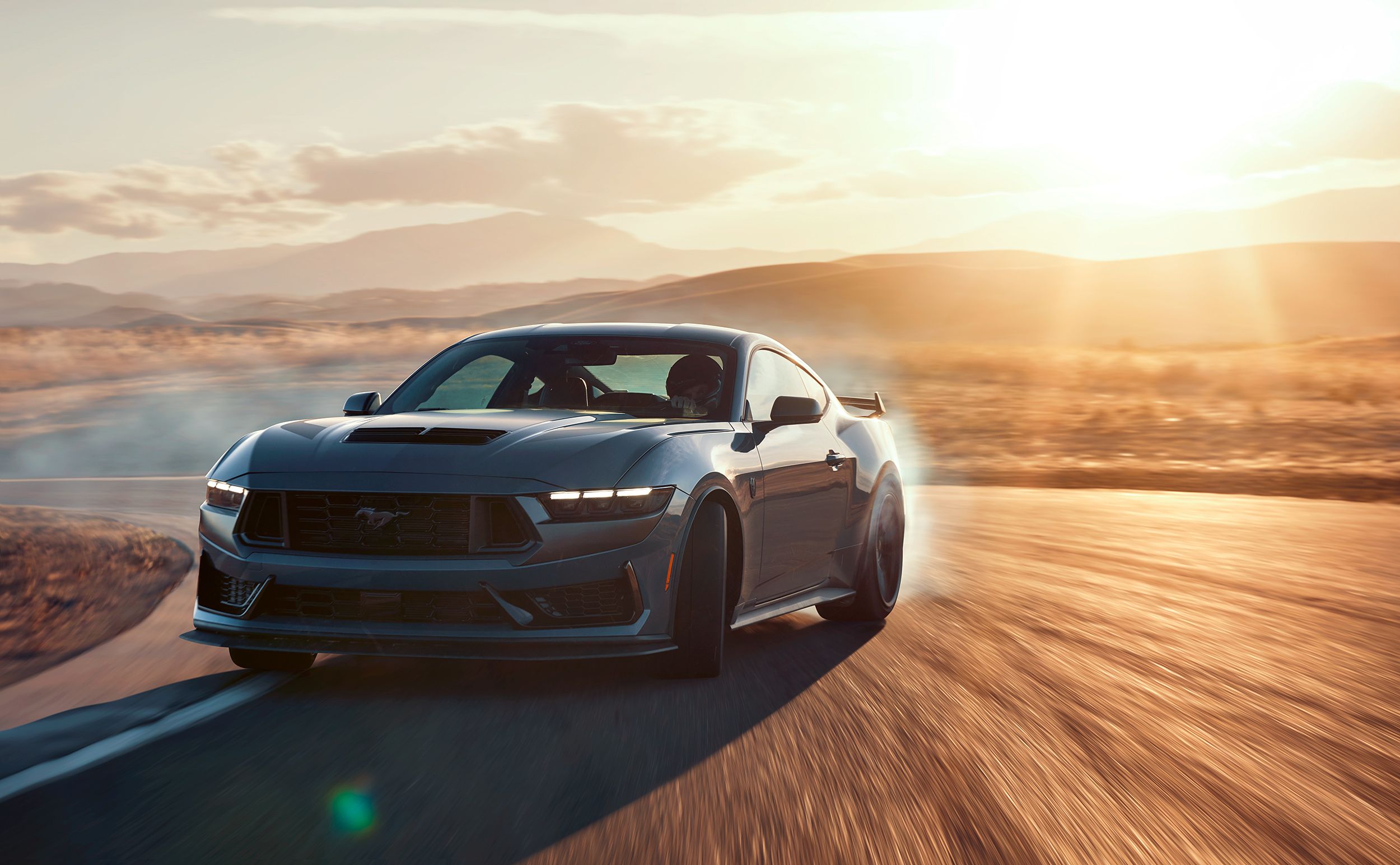
Alright, gather ’round, petrolheads, because we need to talk. We all know the big names, don’t we? The Mustangs, the Chevelles, the Chargers, the GTOs – they hog all the glory, the cover shots, and frankly, the astronomical auction prices. They’re the rockstars of the muscle car world, and deservedly so. But what about the unsung heroes, the quiet achievers, the genuine game-changers that, for one reason or another, simply never got the standing ovation they absolutely deserved?
Because, let’s be honest, for every headline-grabbing legend, there’s a lesser-known machine out there that packed the same hardware, sang the same V8 symphony, and delivered just as much, if not more, raw, unapologetic power. Some were overshadowed by their more famous siblings, some were just a little too early for their time, or perhaps too different to capture the mainstream imagination. It’s a genuine travesty, if you ask me, that these incredible machines flew under the radar.
So, if you’re like us, tired of chasing the usual suspects and hankering for something a bit more… individual, then you’re in the right place. We’re about to unearth some genuine gearhead gold, a list of muscle car underdogs that have aged remarkably well – in some cases, even better than the icons they inadvertently competed against. Get ready to rethink everything you thought you knew about American muscle.
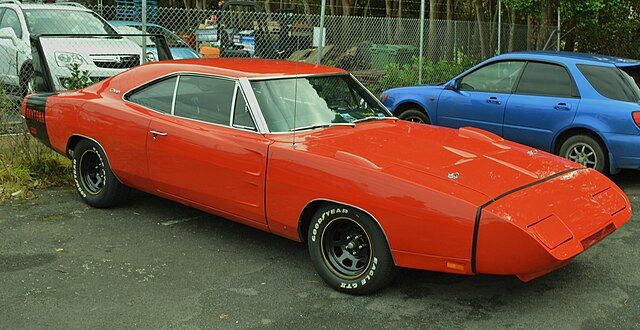
1. **Dodge Charger Daytona**: If you ever fantasized about a car that looked like it just escaped Gotham City and could actually perform brilliantly in the real world, then allow us to introduce you to the magnificent Dodge Charger Daytona. This wasn’t just another car; it was a statement. When it burst onto the scene in 1969, it had a truly unique look, some might even say bizarre, but that distinctiveness only amplified its appeal. It was a vehicle that defied convention and demanded attention, much like its future exploits.
This aerodynamically daring machine wasn’t merely about shocking aesthetics; it was built for pure, unadulterated speed. This is the very car that Buddy Baker drove in 1970, famously using it to shatter the then-unthinkable 200 miles per hour barrier. Think about that for a second: 200 mph in 1970! That wasn’t just fast; it was warp speed. It was a clear declaration that Dodge was playing a different game, pushing boundaries that others hadn’t even contemplated.
Despite its groundbreaking performance and undeniably iconic, albeit peculiar, styling, the Daytona often gets lumped in with other Charger variants without receiving its due as a true pioneer. It was purpose-built for competition, a shape sculpted for drag reduction, which helped it famously take home the crown from the NASCAR Manufacturers Championship in 1969. Considering this incredible history and design, it’s baffling how it’s not universally recognized as the absolute legend it is.
Car Model Information: 2023 Tesla Model Y Long Range Dual Motor All-Wheel Drive
Name: Dodge Charger Daytona
Caption: 1969 Dodge Charger Daytona
Manufacturer: Dodge
Production: 1969–1970,2006–2009,2013,2017–2023
Class: Muscle car
Layout: FR layout
Categories: 1960s cars, 1970s cars, 2000s cars, All articles needing additional references, All articles with unsourced statements
Summary: Dodge produced three separate models with the name Dodge Charger Daytona, all of which were modified Dodge Chargers. The name was taken from Daytona Beach, Florida, which was an early center for auto racing and still hosts the Daytona 500, NASCAR’s premier event. The original Dodge Charger Daytona was designed to beat the competition in NASCAR racing. It was the first NASCAR vehicle to reach 200 miles per hour, which was a major milestone at the time.
The first use of the ‘Daytona’ name for a car was on a version of the Studebaker Lark. The Daytona was the performance model of the compact Lark, and it was produced during the 1960s.
Get more information about: Dodge Charger Daytona
Buying a high-performing used car >>>
Brand: DODGE Model: CHARGER DAYTONA
Price: $31,500 Mileage: 17,845 mi.
Read more about: Unearthing Automotive Legends: Why the Ultra-Rare Dodge Charger Hemi is the Ultimate Barn Find Thrill for Enthusiasts
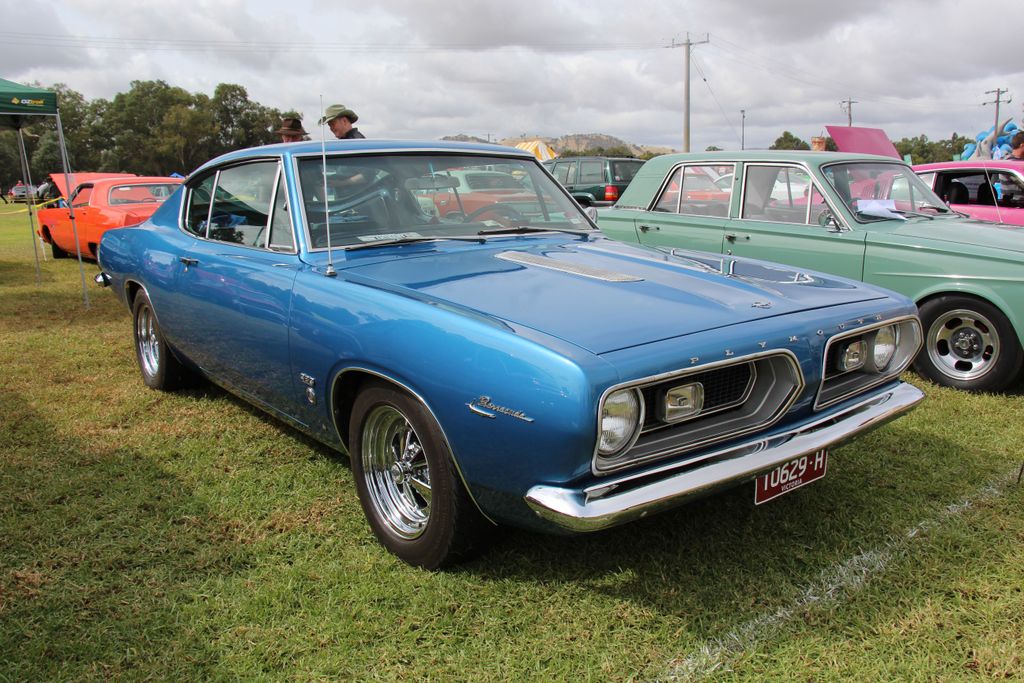
2. **Plymouth Barracuda Formula S**: Now, here’s a car that truly had it all: the quintessential classic muscle car silhouette, an unmistakable retro vibe straight out of the swinging sixties, and performance credentials to match. The Barracuda, in its various iterations, was a car that evolved, with the first generation based on the Chrysler A-body, the second receiving a significant redesign, and the third generation making the bold switch to a Chrysler E-body. Each evolution brought something new, but the heart of the matter remained.
Regardless of its underlying platform, the Formula S variant was truly where the magic happened. It was primarily renowned for its incredibly versatile engine options, which offered a fantastic blend of power and everyday usability, alongside its truly unique trim packages. These weren’t just production-line cars; customized S variants became a genuinely big deal in their day, allowing owners to infuse their personalities into these potent machines.
While the Barracuda generally enjoys a decent reputation, the Formula S, with its specific enhancements and performance capabilities, often gets overshadowed by its flashier Mopar siblings, like the Challenger and Charger. It was a sophisticated beast, a proper driver’s car that offered a more refined yet equally thrilling experience. It’s a prime example of a car that did everything right but perhaps didn’t shout about it quite as loudly as some others.
Car Model Information: 1971 Plymouth Barracuda
Caption: 1970 Hardtop Coupe
Name: Plymouth Barracuda
Manufacturer: Plymouth (automobile)
Production: 1964–1974
Assembly: Fenton, Missouri,Hamtramck, Michigan,Maywood, California,Windsor, Ontario
Layout: Front-engine, rear-wheel drive layout
Class: Pony car
Categories: 1970s cars, All articles with dead external links, All articles with unsourced statements, Articles with dead external links from February 2018, Articles with dead external links from January 2022
Summary: The Plymouth Barracuda is a two-door pony car that was manufactured by Chrysler Corporation from 1964 through 1974 model years.
The first-generation Barracuda was based on the Chrysler A-body and was offered from 1964 until 1966. A two-door hardtop (no B-pillar) fastback design, it shared a great majority of parts and bodywork with the Plymouth Valiant, except for the distinctive wraparound rear glass.
The second-generation Barracuda, though still Valiant-based, was heavily redesigned. Built from 1967 through 1969, it was available as a two-door in fastback, notchback, and convertible versions.
The third generation, offered from 1970 until 1974, was based on the Chrysler E-body, exclusive to it, and the slightly larger Dodge Challenger. A completely new design, the two-door Barracuda was available in hardtop and convertible body styles.
Get more information about: Plymouth Barracuda
Buying a high-performing used car >>>
Brand: Plymouth Model: Barracuda
Price: $69,999 Mileage: 102,036 mi.
Read more about: From Underdogs to Icons: Unearthing the 12 Most Collectible American Cars of the Electrifying 1980s
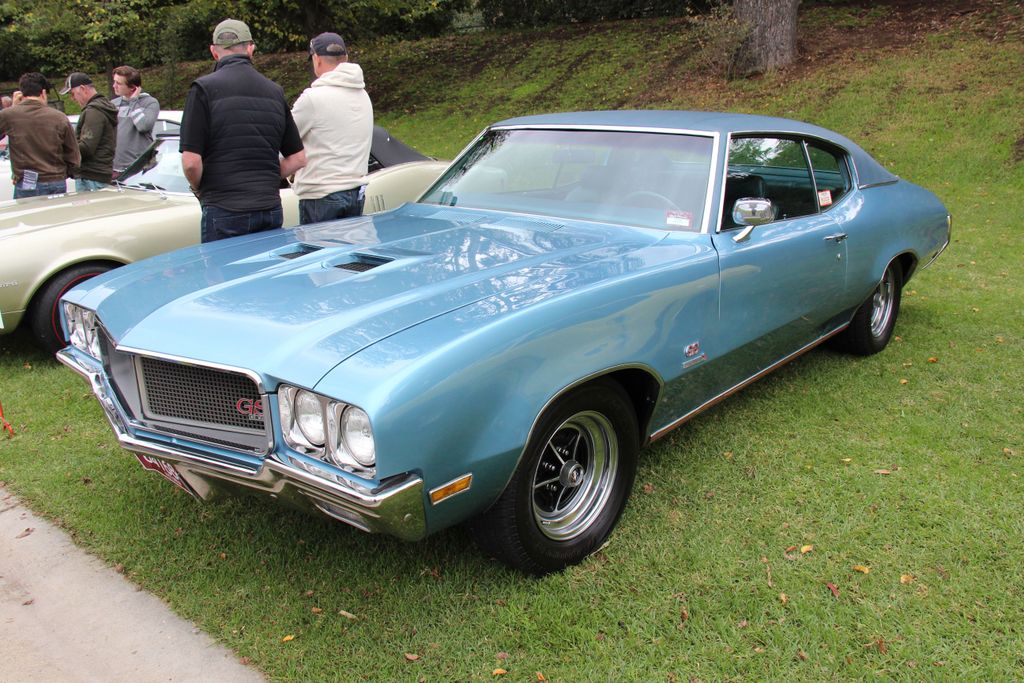
3. **Buick Gran Sport 455**: Buick, bless its heart, has a somewhat undeserved reputation for being the quiet, sensible sibling in the GM family. But don’t let that fool you, because they’ve unleashed some truly powerful, and unfortunately, underrated, sports cars over the years. And when we talk about them, the Gran Sport 455 immediately springs to mind as a prime example of this often-overlooked prowess.
What made the Gran Sport so special was its combination of a relatively light frame with truly surprising performance. It was a car that punched well above its perceived weight class, often catching unsuspecting drivers completely off guard. Now, to be fair, it did fall slightly short in direct comparison to some other A-body models of its era in certain metrics, but those comparisons often miss the point entirely when you look at its overall package.
But here’s the kicker, and this is where the Gran Sport 455 truly shines: while it might not be as highly regarded as the top-of-the-line GSX trim, this car actually had more torque than a legendary 426 Hemi. Yes, you read that right, *more torque*. And if that wasn’t enough to make you sit up and take notice, it was also around 150 pounds lighter than some of its more famous contemporaries. It’s a genuine sleeper, a car that will put a smile on your face and leave others wondering exactly what just blew past them.
Car Model Information: 2024 Genesis GV70 2.5T AWD
Name: Gran Sport
Logo: Buick gs emblem.png
Producttype: Performance car
Currentowner: General Motors
Producedby: General Motors
Introduced: [object Object]
Related: T-Type
Markets: U.S.
Categories: All Wikipedia articles in need of updating, All articles with unsourced statements, Articles with short description, Articles with unsourced statements from September 2020, Buick vehicles
Summary: The Gran Sport name has been used on several high-performance cars built by General Motors for its Buick brand since 1965. In the GM brands hierarchy, Buick was surpassed in luxury and comfort appointments only by Cadillac, which did not produce performance models. As a result, the Buick GS series were the most opulently equipped GM sport models of their era.
The Gran Sport performance enhancements on all Buick products during this era sought to affirm Buick’s tradition of producing powerful and comfortable products going back to the 1930s when all Buicks of the time were upgraded to the Buick Fireball Straight Eight, then installed the 278 cu in (4.6 L) Roadmaster engine in the shortest model Special and introduced the Century, known as “the banker’s hot rod” with a three speed synchromesh manual transmission. The Gran Sport sought to identify cars that were fun to drive with a luxury approach.
Get more information about: Buick Gran Sport
Buying a high-performing used car >>>
Brand: Buick Model: Gran Sport 455
Price: $39,995 Mileage: 20,074 mi.
Read more about: 15 Untamed 1970s Muscle Cars That Would Leave Today’s Drivers Absolutely Speechless
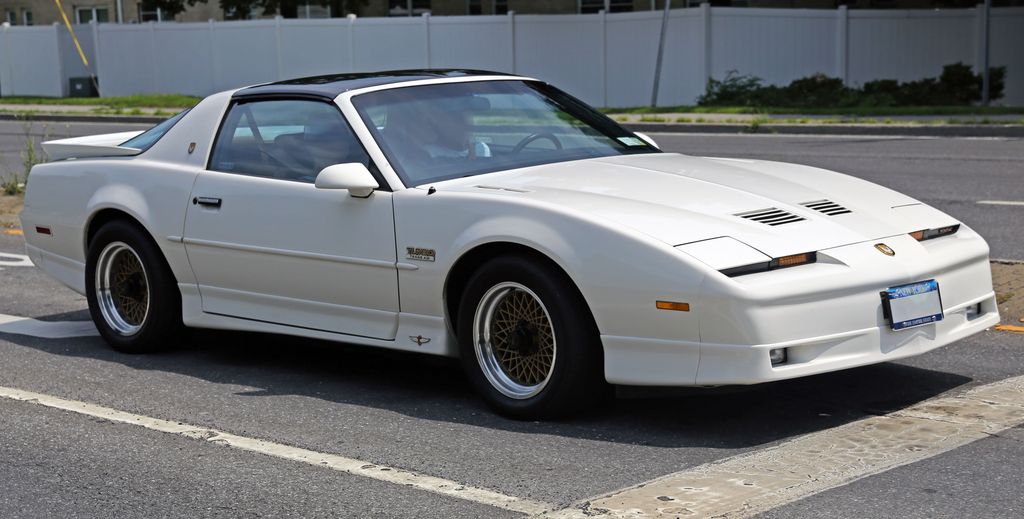
4. **1989 Pontiac Turbo Trans AM**: Right, let’s talk about the late ’80s, a somewhat dark era for horsepower, where many cars got ignored due to their rather modest outputs. In 1989, Pontiac unleashed its Turbo Trans Am, and initially, it suffered from this very problem. But bless their cotton socks, the team at Pontiac took that low horsepower perception as a direct challenge, and what they did next was nothing short of brilliant.
They decided to remedy this by stuffing a turbo V6 into the Trans Am, specifically the last of the turbo Buick 3.8Ls from the famous GNX. Yes, they took the heart of the mighty GNX and transplanted it into the TTA for one year only. This bold move led to a reignited appeal, transforming the car from a bit of an underdog into a genuine contender. Think of this as a GNX that’s not only lighter but also handles significantly better, and here’s the kicker – it costs you less.
Now, this incredible machine is celebrated as a light and supremely capable car that, incredibly, remains relatively affordable on the collector market. It’s even got a certain stealth factor with its often plain white paint, making it a true wolf in sheep’s clothing. This was Pontiac’s way of stealing some of that coveted IROC sales thunder, and they absolutely succeeded in creating a performance icon that, even today, continues to defy expectations and delight drivers.
Car Model Information: 2022 Mazda CX-5 2.5 S Premium
Name: Pontiac Firebird
Caption: The second, third, and fourth generations of,the Pontiac Firebird Trans Am
Manufacturer: Pontiac (automobile)
Production: February 23, 1967 – August 30, 2002
ModelYears: 1967 – 2002
Class: Pony car,Muscle car
Platform: GM F platform
Related: Chevrolet Camaro
Layout: Front engine, rear-wheel-drive layout
Categories: 1970s cars, 1980s cars, 1990s cars, 2000s cars, All articles with dead external links
Summary: The Pontiac Firebird is an American automobile built and produced by Pontiac from the 1967 to 2002 model years. Designed as a pony car to compete with the Ford Mustang, it was introduced on February 23, 1967, five months after GM’s Chevrolet division’s platform-sharing Camaro. This also coincided with the release of the 1967 Mercury Cougar, Ford’s upscale, platform-sharing version of the Mustang.
The name “Firebird” was also previously used by GM for the General Motors Firebird series of concept cars in the 1950s.
Get more information about: Pontiac Firebird
Buying a high-performing used car >>>
Brand: Pontiac Model: Trans AM
Price: $25,680 Mileage: 32,780 mi.
Read more about: From Underdogs to Icons: Unearthing the 12 Most Collectible American Cars of the Electrifying 1980s
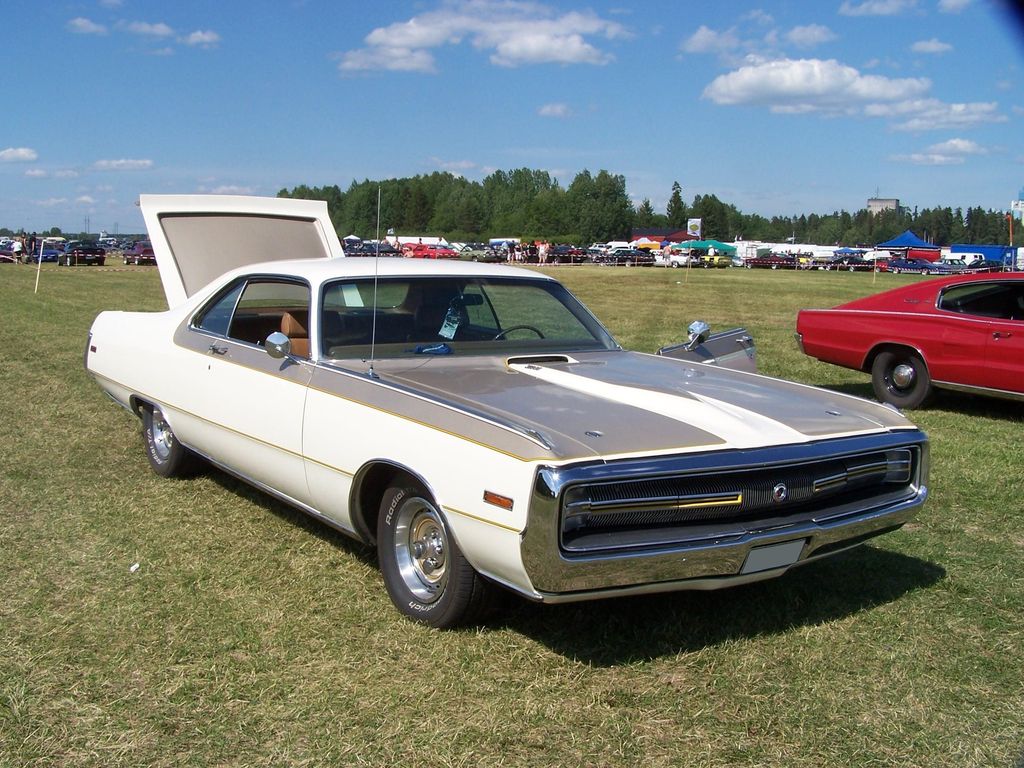
5. **Chrysler 300 Hurst**: Feast your eyes, ladies and gentlemen, on a genuine rarity, a truly special machine that rolled out in 1970 and has since become quite the sought-after collectible. The Chrysler 300 Hurst wasn’t just another car; it was a collaboration between a legendary manufacturer and the iconic shifter specialists, Hurst, producing something truly unique in the muscle car landscape.
This car had an awful lot going for it, combining high performance with the undeniable allure of limited production exclusivity. It was a beast built for luxury and speed, filled with plush leather and, of course, Hurst performance parts that underscored its sporting intentions. While it originally emerged from Chrysler’s stable between 1955 and 1965, becoming seen as the very genesis of muscle cars, this 1970 Hurst edition took that legacy to a whole new level of bespoke performance.
Sporting a truly traditional, and wonderfully garish, white on tan paint scheme, the 300 Hurst was a sight to behold. Its 440 V8 engine was thoroughly decent for the era, propelling this big car to 60 mph in a respectable 7.1 seconds and running a low 15-second quarter mile. With fewer than 500 of these beauties ever made, it’s not just a rare find, it’s a future Barrett-Jackson classic. This is the kind of car that makes you wonder why everyone isn’t talking about it more.
Car Model Information: 2018 Chrysler 300 S
Name: Chrysler 300
Aka: Lancia Thema
Manufacturer: Chrysler (automotive brand)
Production: February 1, 2004– December 2023
ModelYears: 2005–2023
Class: Executive car
Layout: Front-engine, rear-wheel-drive layout,automobile layout
Predecessor: Chrysler 300M,Chrysler Concorde,Chrysler Intrepid
Categories: 2010s cars, All articles with dead external links, All articles with unsourced statements, Articles with dead external links from June 2025, Articles with short description
Summary: The Chrysler 300 is a full-size car manufactured and marketed by Stellantis North America and its predecessor companies. It was available as a four-door sedan and station wagon in its first generation (model years 2005–2010), and solely as a four-door sedan in its second generation (model years 2011–2023).
The second generation 300 was marketed as the Chrysler 300C in the United Kingdom and Ireland and as the Lancia Thema in the remainder of Europe.
Get more information about: Chrysler 300
Buying a high-performing used car >>>
Brand: Chrysler Model: 300
Price: $22,791 Mileage: 61,968 mi.
Read more about: From Underdogs to Icons: Unearthing the 12 Most Collectible American Cars of the Electrifying 1980s
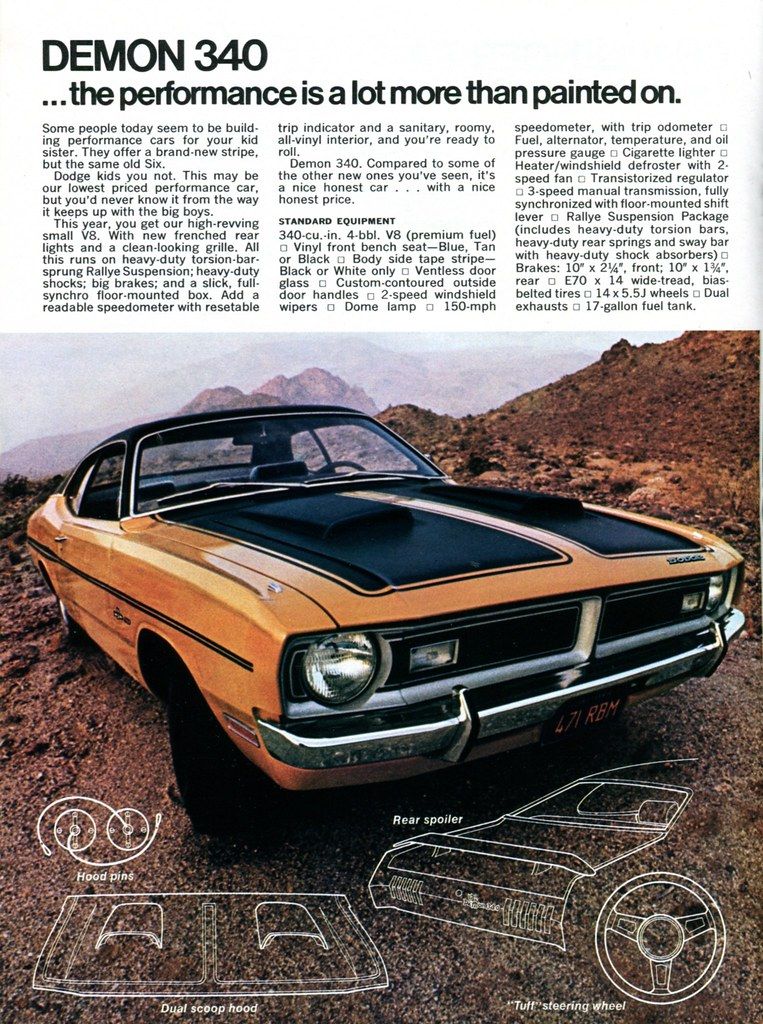
6. **Dodge Demon 340**: Now, hold on to your hats, because this particular Demon, hailing from 1971, is exceptionally cool. Plymouth made a clever move here, deciding to take the Duster shell from the year before and marry it to a Dart front clip. The result was a compact muscle car that packed a serious punch and boasted an undeniably aggressive demeanor, proving that good things really do come in smaller packages.
What truly elevates this car to “exceptionally cool” status isn’t just its engine, which could be a 340 or 360 V8 when paired with a 4-speed manual. It’s the sheer style, the undeniable flair, and all the thoughtful features packed into it. This includes, crucially, a Rallye suspension, designed to keep things tight and responsive when you’re pushing the limits, and 10-inch drum brakes – essential for when you’re really feeling the speed and need to rein it all back in.
The Demon, much like its Duster sibling, offered a fantastic option for those seeking a fun, traditional muscle car experience without the eye-watering sticker shock of some of its larger, more famous Mopar brethren. It was light, weighing in right around 3,000 lbs, making it incredibly agile. Despite its clear capabilities and fantastic driving dynamics, it often gets overlooked, flying under the radar compared to the ‘Cuda or Charger. And frankly, that’s a crying shame.
Car Model Information: 2022 Mazda CX-5 2.5 S Premium
Name: Dodge Dart
Caption: 1966 Dodge Dart GT 2-door hardtop
Manufacturer: Dodge
Production: 1959–1976 (US market)
1969-1981 (Brazil)
AlternativeName: Charger (Brazil)
ModelYears: 1960–1976 (US market)
1970-1981 (Brazil)
Class: Full-size
Layout: FR layout
Predecessor: Dodge Coronet#Fourth generation (1957–1959)
Related: Plymouth Valiant,Chrysler Valiant,Dodge Phoenix
Successor: Dodge Aspen,Dodge Diplomat,Talbot Tagora
Categories: 1970s cars, All articles with unsourced statements, Articles with short description, Articles with unsourced statements from December 2023, Articles with unsourced statements from May 2025
Summary: The Dodge Dart is a line of passenger cars produced by Dodge from the 1959 to 1976 model years in North America, with production extended to later years in various other markets.
The production Dodge Dart was introduced as a lower-priced full-size model in 1960 and 1961, but became a mid-size car for one model year for 1962, and was then reduced to a compact for two generations, from 1963 to 1976.
Chrysler had first used ‘Dart’ name plates on two Italian styled show cars, in 1956 and 1957, before it became a Dodge model name. The Dart nameplate was resurrected for a Fiat-derived compact car that was introduced in 2012.
Get more information about: Dodge Dart
Buying a high-performing used car >>>
Brand: Dodge Model: Demon 340
Price: $25,680 Mileage: 32,780 mi.
Read more about: Unleash the Roar: 14 Badass Golden Era Muscle Cars You Can Still Own Without Breaking the Bank
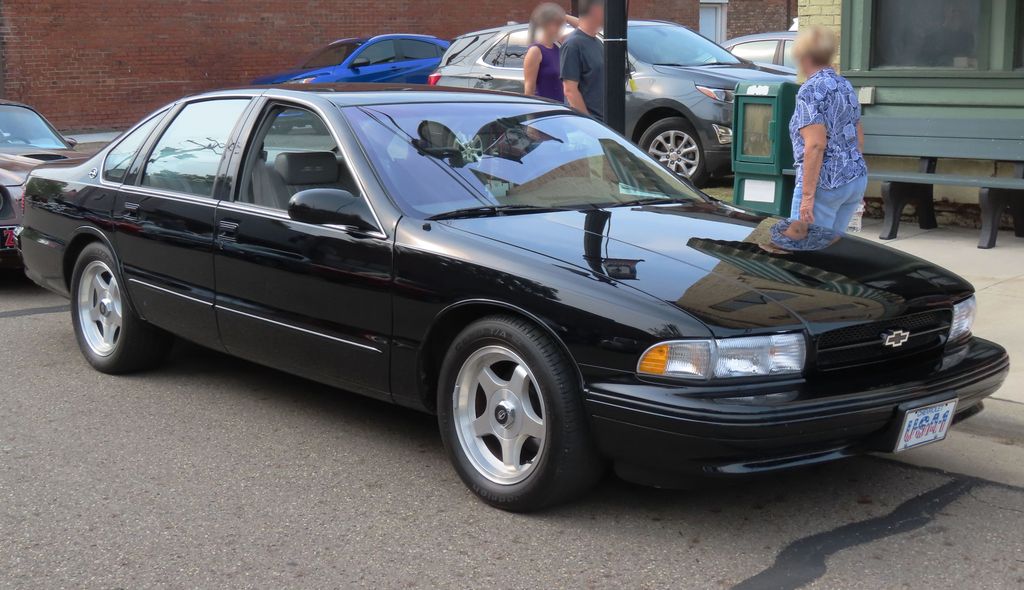
7. **Chevrolet Impala SS**: If you’re a purist, a stickler for the classics, then the Chevrolet Impala SS, particularly the mid-90s iteration, is an absolute beast that’s incredibly hard to beat. By the mid-90s, the B-body Chevy Caprice platform was, let’s be honest, an archaic blob. But the Impala SS name, oh, that name single-handedly saved it from utter mediocrity and transformed it into something truly special.
What did they do? They took this full-size car, stuffed a beefy Corvette 5.7L engine into it – yes, *that* Corvette engine – lowered its ride height, and slapped on some decent rubber. The result? You had one of the best all-around drivers on any list, capable of cruising in comfort one moment and then lighting up the asphalt the next. It was a proper sleeper, stylish on the outside but surprisingly stealthy when it came to performance.
And if you thought that was good, consider the possibilities: a T56 manual transmission could drop right in, and there’s a literal ton of cheap upgrades available for these cars. This means your leather-swathed, comfy cruiser could easily be transformed into a fantastic, stealthy driver’s car without breaking the bank. It offered superb performance, a comfortable ride, and a massive aftermarket, yet it’s often overlooked in favor of more overtly sporty models. It’s a full-size brute that deserved far more respect.
Alright, you’ve seen the first seven, but trust me, we’re just getting warmed up! The world of underrated muscle cars is a deep, glorious rabbit hole, and we’re about to pull out some more absolute gems. These are the machines that dared to be different, that pushed boundaries, or simply arrived at the wrong party at the wrong time, but still delivered proper thrills.
Forget the usual suspects; these next seven are going to genuinely surprise you with their audacious designs, clever engineering, and the sheer grunt they packed. They might not have the household name recognition, but they’ve got the heart, the soul, and the undeniable muscle to prove they belong in the pantheon of greatness. Let’s fire them up, shall we?
Car Model Information: 2022 Mazda CX-5 2.5 S Premium
Name: Chevrolet Impala
Caption: Fourth generation model (1967)
Manufacturer: Chevrolet
Production: 1957–1985,1994–1996,1999–2020
ModelYears: 1958–1985,1994–1996,2000–2020
Predecessor: Chevrolet Bel Air,Chevrolet Lumina#Second generation (1995–2001)
Successor: Chevrolet SS,Chevrolet Caprice
Platform: GM B platform,GM W platform,GM W platform (GMX211) (2005–2013),GM Epsilon platform#Epsilon II
Class: Full-size car,Mid-size car
Layout: Front-engine, rear-wheel-drive layout,Front-engine, front-wheel-drive layout
Categories: 1960s cars, 1970s cars, 1980s cars, 1990s cars, 2000s cars
Summary: The Chevrolet Impala () is a full-size car that was built by Chevrolet for model years 1958 to 1985, 1994 to 1996, and 2000 to 2020. The Impala was Chevrolet’s popular flagship passenger car and was among the better-selling American-made automobiles in the United States.
For its debut in 1958, the Impala was distinguished from other models by its symmetrical triple taillights. The Chevrolet Caprice was introduced as a top-line Impala Sport Sedan for model year 1965, later becoming a separate series positioned above the Impala in 1966, which, in turn, remained above the Chevrolet Bel Air and the Chevrolet Biscayne. The Impala continued as Chevrolet’s most popular full-sized model through the mid-1980s. Between 1994 and 1996, the Impala was revised as a 5.7-liter V8–powered version of the Chevrolet Caprice Classic sedan.
In 2000, the Impala was reintroduced again as a mainstream front-wheel drive car. In February 2014, the 2014 Impala ranked No. 1 among Affordable Large Cars in U.S. News & World Report’s rankings. When the 10th generation of the Impala was introduced for the 2014 model year, the 9th generation was rebadged as the Impala Limited and sold only to fleet customers through 2016. During that time, both versions were sold in the United States and Canada. The 10th-generation Impala was also sold in the Middle East and South Korea.
Get more information about: Chevrolet Impala
Buying a high-performing used car >>>
Brand: Chevrolet Model: Impala SS
Price: $25,680 Mileage: 32,780 mi.
Read more about: Everyone Wants These 14 Classic Cars In Their Garage: A Deep Dive for Enthusiasts
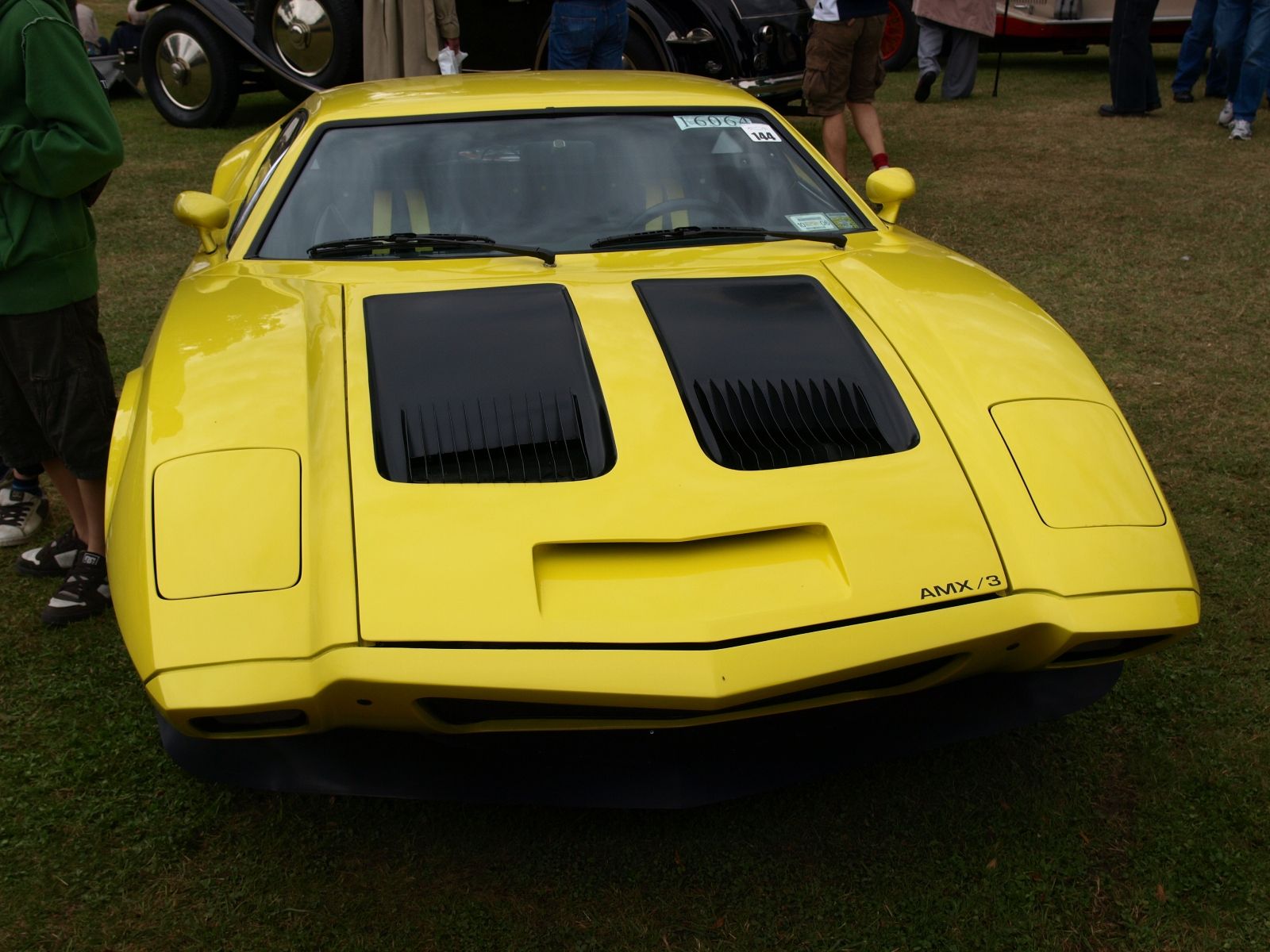
8. **American Motors AMX/3**Now, when you think of American Motors, you probably picture sensible sedans, right? Well, prepare to have your preconceptions absolutely shattered, because AMC, bless their audacious hearts, certainly knew how to impress when they dipped their toes into the muscle car waters. The AMX/3 wasn’t just another car; it was a statement, a bold declaration that AMC could play in the supercar sandbox.
The public, when they caught a glimpse of this machine, was genuinely blown away by its truly unique look. It was a radical departure, a visually striking piece of automotive art that commanded attention wherever it went. Unfortunately, as is often the case with such visionary projects, only a very limited number of these beauties were ever made, turning it into an almost mythical hot collector’s item.
Seeing one of these in the metal is rare enough to make you pinch yourself, a genuine once-in-a-lifetime sighting for most petrolheads. And if you’re lucky enough to find one up for sale, be prepared to dig deep, because buying one can cost you roughly $800,000. It’s a testament to its groundbreaking design and extreme rarity that it commands such a staggering price, proving that sometimes, the most overlooked cars are also the most valuable.
Car Model Information: 2022 Mazda CX-5 2.5 S Premium
Name: AMC AMX
Caption: 1968 AMX with “Go-Package”
Manufacturer: American Motors Corporation
Production: 1968–1970
Assembly: Kenosha, Wisconsin,Port Melbourne, Victoria
Aka: Rambler AMX (Australia)
Class: Grand tourer,Muscle car,Sports car
BodyStyle: coupé
Layout: Front-engine, rear-wheel drive layout
Platform: AMC’s “junior cars”
Successor: AMC Javelin#Second generation
Designer: Dick Teague
Wheelbase: 97 in
Abbr: on 1970
Length: 1968–69: {{convert,177,in,mm,0,abbr=on
Width: 71 in
Height: 51 in
Weight: 3000 lb
Transmission: Manual transmission,Automatic transmission
Engine: AMC V8 engine,225 hp
Categories: 1970s cars, AMC vehicles, All articles with dead external links, Articles with dead external links from July 2023, Articles with dead external links from November 2012
Summary: The AMC AMX is a two-seat GT-style muscle car produced by American Motors Corporation from 1968 through 1970. As one of just two American-built two-seaters, the AMX was in direct competition with the one-inch (2.5 cm) longer wheelbase Chevrolet Corvette, for substantially less money. It was based on the new-for-1968 Javelin, but with a shorter wheelbase and deletion of the rear seat. In addition, the AMX’s rear quarter windows remained fixed, making it a coupe, while the Javelin was a true two-door hardtop.
Fitted with the standard high-compression 290 cu in (4.8 L) or optional 343 cu in (5.6 L) or 390 cu in (6.4 L) AMC V8 engine, the AMX offered sporty performance at an affordable price. Despite this value and enthusiastic initial reception by automotive media and enthusiasts, sales never thrived. However, the automaker’s larger objectives to refocus AMC’s image on performance and to bring younger customers into its dealer showrooms were achieved. After three model years, the two-seat version was discontinued.
The AMX’s signature badging was transferred to a high-performance version of its four-seat sibling, the Javelin, from the 1971 to 1974 model years. American Motors capitalized on the respected reputation of the original two-seat AMXs by reviving the model designation for performance-equipped coupe versions of the compact Hornet in 1977, Concord in 1978, and the subcompact Spirit in 1979 and 1980.
Get more information about: AMC AMX
Buying a high-performing used car >>>
Brand: American Motors Model: AMX/3
Price: $25,680 Mileage: 32,780 mi.
Read more about: Unearthing Automotive Legends: 14 of the Rarest American Muscle Cars That Command the Roads

9. **Studebaker Avanti R2**Here’s a car that dared to defy the traditional brute-force image of the muscle car, opting instead for a blend of suave style and refined elegance. The Studebaker Avanti R2 was a personal luxury coupe that somehow managed to fuse sophistication with serious power, proving that muscle didn’t always have to come wrapped in a rough-and-tumble package. It truly stood out from the crowd, making it work when most others wouldn’t even try.
Introduced back in 1962, the Avanti was a vision of the future, a sleek, avant-garde design that was far ahead of its time. Imagine the impact it must have had, rolling off the production line looking like something out of a sci-fi movie. This wasn’t just about looks, though; it packed a punch that belied its graceful exterior.
Tragically, despite grand plans to build 20,000 units that year, issues around production meant only about 1,200 were actually built. This limited run, while heartbreaking for Studebaker at the time, has only served to enhance its mystique and desirability among collectors today. It’s a genuine shame that such a pioneering blend of style and substance didn’t get the widespread appreciation it deserved in its heyday.
Car Model Information: 1963 Studebaker Avanti
Name: Studebaker Avanti
Caption: 1963 Studebaker Avanti
Manufacturer: Studebaker
Aka: Avanti
Production: 1962: 1,200;
Assembly: Studebaker Corporation#Studebaker Factories,South Bend, Indiana
Predecessor: Studebaker Gran Turismo Hawk
Class: Personal luxury car
BodyStyle: coupe
Layout: FR layout
Engine: 289 CID
Abbr: on
Transmission: Manual transmission
Wheelbase: 109 in
Length: 192.4 in
Width: 70.3 in
Height: 53.8 in
Weight: 3095 lb
Related: Studebaker Lark
Designer: Raymond Loewy#Avanti
Categories: All articles with incomplete citations, Articles with incomplete citations from September 2018, Articles with short description, CS1 errors: missing title, Cars discontinued in 1963
Summary: The Studebaker Avanti is a personal luxury coupe manufactured and marketed by Studebaker Corporation between June 1962 and December 1963. A halo car for the maker, it was marketed as “America’s only four-passenger high-performance personal car.”
Described as “one of the more significant milestones of the postwar industry”, the Raymond Loewy-designed car offered safety features and high-speed performance. Called “the fastest production car in the world” upon its introduction, a modified Avanti reached over 170 mph (270 km/h) with its supercharged 289-cubic-inch (4,740 cm3) R3 engine at the Bonneville Salt Flats. In all, it broke 29 world speed records at the Bonneville Salt Flats.
Following Studebaker’s discontinuation of the model, a succession of five ventures manufactured and marketed derivatives of the Avanti model through 2006. These ventures licensed intellectual property and, in some cases procured parts, through arrangements with the successors to the Studebaker assets.
Get more information about: Studebaker Avanti
Buying a high-performing used car >>>
Brand: Studebaker Model: Avanti
Price: $38,863 Mileage: 19,130 mi.
Read more about: Boomers Love These Classic Cars, Millennials Aren’t So Sure – Here’s Why
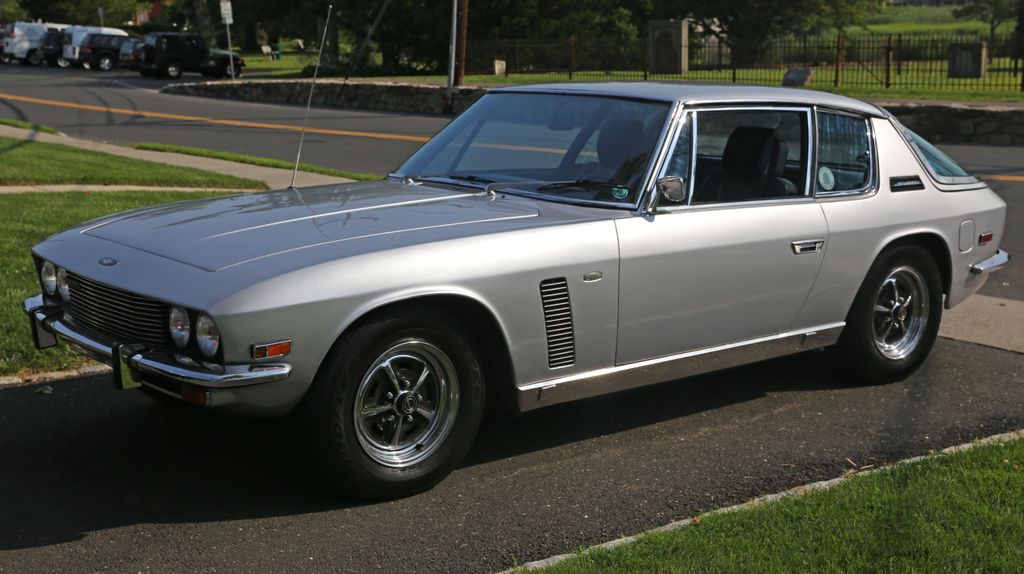
10. **Jensen Interceptor**Right, prepare yourselves for a curveball, because our next contender hails not from the land of hot rods and drag strips, but from the rather… polite… British car industry. Yes, the Jensen Interceptor is indeed a British-made machine, and you have to hand it to their marketing department – “Interceptor” is a pretty cool name for a car, isn’t it?
But don’t let its refined European origins fool you; this beauty was a proper beast under the bonnet. Jensen did something truly ingenious: they stuffed a mighty 440 cubic inches of Chrysler firepower into its uniquely classic body. This wasn’t some dainty, tea-and-crumpets GT; this was a muscle car dressed in a bespoke suit, combining classic good looks with an angle towards high-speed handling over low-speed agility, making it a perfect example of a GT that truly delivers.
The Interceptor wasn’t just about the engine, though. It boasted a classy interior, exactly what you’d expect from a pricey British brand, offering a luxurious experience alongside its raw power. It was even further upgraded over its production run with new headlamps and a revised front grille, subtly refining its already distinct presence. It’s a period-correct, yet surprisingly educated muscle car, that often gets overlooked by those who haven’t broadened their horizons beyond American shores.
Car Model Information: 1974 Jensen Interceptor
Caption: 1971 Jensen Interceptor MkII (US)
Name: Jensen Interceptor
Manufacturer: Jensen Motors
Assembly: West Bromwich
Production: 1966–1976,6,408 produced
Class: Grand Tourer
BodyStyle: hatchback,convertible,coupé
Engine: {{cvt,383,cid,L,1,Chrysler B engine#383,V8 engine
Transmission: manual transmission,Torqueflite
Length: cvt
Width: cvt
Height: cvt
Weight: cvt
Wheelbase: cvt
Predecessor: Jensen CV8
Layout: Front-engine, rear-wheel-drive layout
Designer: Carrozzeria Touring
Related: Jensen FF
Categories: 1970s cars, Articles with short description, Cars introduced in 1966, Commons category link is on Wikidata, Convertibles
Summary: The Jensen Interceptor is a grand touring car which was hand-built at the Kelvin Way Factory in West Bromwich, near Birmingham in England, by Jensen Motors between 1966 and 1976. The Interceptor name had been used previously by Jensen for the Jensen Interceptor made between 1950 and 1957 at the Carters Green factory. Jensen had extensively used glass-reinforced plastic for the fabrication of body panels in the preceding two decades, but the new Interceptor was a return to a steel body-shell. The body was designed by an outside firm, Carrozzeria Touring of Italy, rather than the in-house staff. The early bodies were built in Italy by Vignale, before Jensen took production in house, making some subtle body modifications.
Get more information about: Jensen Interceptor
Buying a high-performing used car >>>
Brand: Jensen Model: Interceptor
Price: $14,750 Mileage: 0 mi.
Read more about: 16 Beloved Car Brands Lost to History (And What Made Them Special)

11. **Ford Torino Talladega**Now, this one might raise an eyebrow, because the 1969 Ford Torino Talladega is actually quite well-known in certain circles, particularly among NASCAR aficionados. But hear me out, because its specific purpose and limited numbers are precisely why it remains underrated in the broader muscle car conversation. This car wasn’t just made; it was sculpted, engineered with pure performance in mind.
Its very shape was a testament to its drag reduction capabilities, a design born in the wind tunnel and honed on the racetrack. It was built for one thing and one thing only: competition. And boy, did it deliver! It famously took home the crown from the NASCAR Manufacturers Championship in 1969, solidifying its place in racing history.
However, its focus on track dominance, combined with its limited production numbers (rules at the time required at least 500 cars to be available for public sale), meant it was less practical and less known outside of dedicated racing circles. While it’s a legend to some, for many, it simply flew under the radar, never gaining the widespread street cred its incredible engineering and racing pedigree truly deserved. It’s the ultimate example of a car that sacrificed mainstream appeal for absolute, unadulterated speed.
Car Model Information: 2022 Mazda CX-5 2.5 S Premium
Name: Ford Torino Talladega
Manufacturer: Ford Motor Company
Related: Mercury Cyclone Spoiler II,Ford Torino
Production: 1969
ModelYears: 1969
Class: Race car
BodyStyle: fastback
Designer: FoMoCo
Categories: All articles lacking in-text citations, All articles needing additional references, All articles with specifically marked weasel-worded phrases, All articles with unsourced statements, Articles lacking in-text citations from July 2015
Summary: The Ford Torino Talladega is a muscle car that was produced by Ford only during the first few weeks of 1969. It was named for the Talladega Superspeedway, which opened the same year. The Talladega was a special, more aerodynamic version of the Torino / Fairlane produced specifically to make Ford even more competitive in NASCAR racing, and it was sold to the public only because homologation rules required a certain minimum number of cars (500 in 1969) be produced and made available.
All production Talladegas were equipped with the new 428 Cobra Jet, which, while very powerful and reliable, was intended as a street engine for Ford’s muscle cars, as it developed high torque at low RPMs, rather than being a high-revving race engine. Early racing builds were powered by the FE 427 side oiler that had been Ford’s main racing engine since 1963; later versions received the Boss 429 engine after it had been homologated in the 1969 Ford Mustang Boss 429.
A largely equivalent vehicle was also sold under the Mercury marque as the Cyclone Spoiler II.
Get more information about: Ford Torino Talladega
Buying a high-performing used car >>>
Brand: Ford Model: Torino Talladega
Price: $25,680 Mileage: 32,780 mi.
Read more about: 15 Untamed 1970s Muscle Cars That Would Leave Today’s Drivers Absolutely Speechless
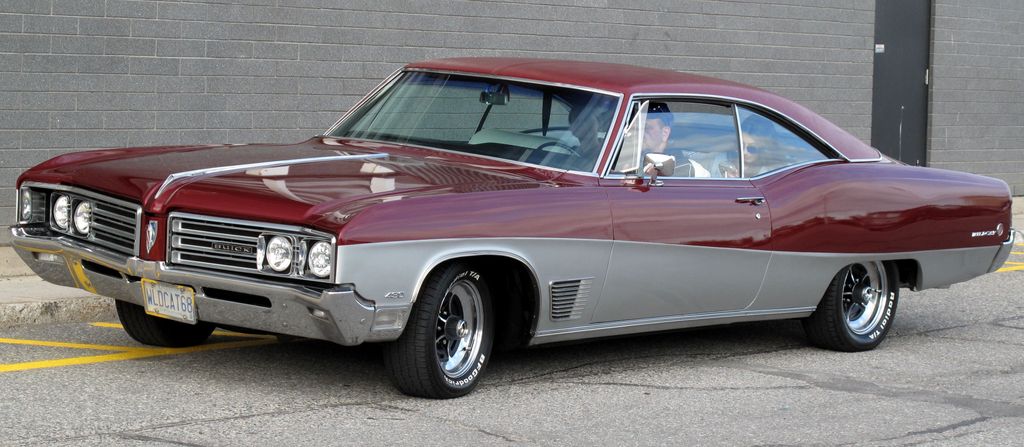
12. **Buick Wildcat**Ah, Buick. Often stereotyped as the sensible sibling, but let’s be honest, they’ve unleashed some proper beasts over the years, and the Wildcat is a roaring case in point. This full-size feline had a short but impactful production stint, with the first generation hitting the streets from 1963 to 1964, and what a sight it was to behold.
The early Wildcats weren’t shy about their presence, boasting large aluminum trim panels and distinctive chrome hash-marks for style that screamed mid-century cool. But it wasn’t just about the looks; it had the muscle to back it up, boasting a potent 325 hp 401 cubic-inch Wildcat V8. These were big ladies, but they offered a nice choice of large Nailhead V8s making well over 300 horsepower.
Later Wildcats, from 1965 to 1970, continued to pack a punch on GM’s common B-body platform, and could even be optioned up to the mighty Buick 455, pumping out a staggering 370 hp and 500 lb/ft of torque. It’s the kind of car that offered serious power and presence, yet often gets overlooked. Think of the Wildcat as the Gran Sport’s hot mom – a bit older, perhaps, but still absolutely fantastic in every way that counts.
Car Model Information: 1963 Buick Wildcat Sport Coupe
Caption: 1963 Wildcat
Manufacturer: Buick
Production: 1963–1970
Predecessor: Buick Invicta
Successor: Buick Centurion
Class: Full-size car
BodyStyle: hardtop
Platform: GM B platform
Layout: FR layout
Categories: 1960s cars, All Wikipedia articles written in American English, All articles with unsourced statements, Articles with short description, Articles with unsourced statements from August 2022
Summary: The Buick Wildcat is a full-size car that was produced by Buick from the 1963 to 1970 model years. Taking its name from a series of 1950s Buick concept cars, the Wildcat replaced the Invicta within the “junior” B-body Buick sedan range. Serving as the higher-performance full-size Buick, the Wildcat was slotted between the LeSabre and the larger C-body Electra.
Following two generations of the model line, the Wildcat was replaced by the Buick Centurion for 1971.
Get more information about: Buick Wildcat
Buying a high-performing used car >>>
Brand: Buick Model: Wildcat
Price: $25,991 Mileage: 46,829 mi.
Read more about: 13 Underrated Muscle Cars: Hidden Gems You Need to See
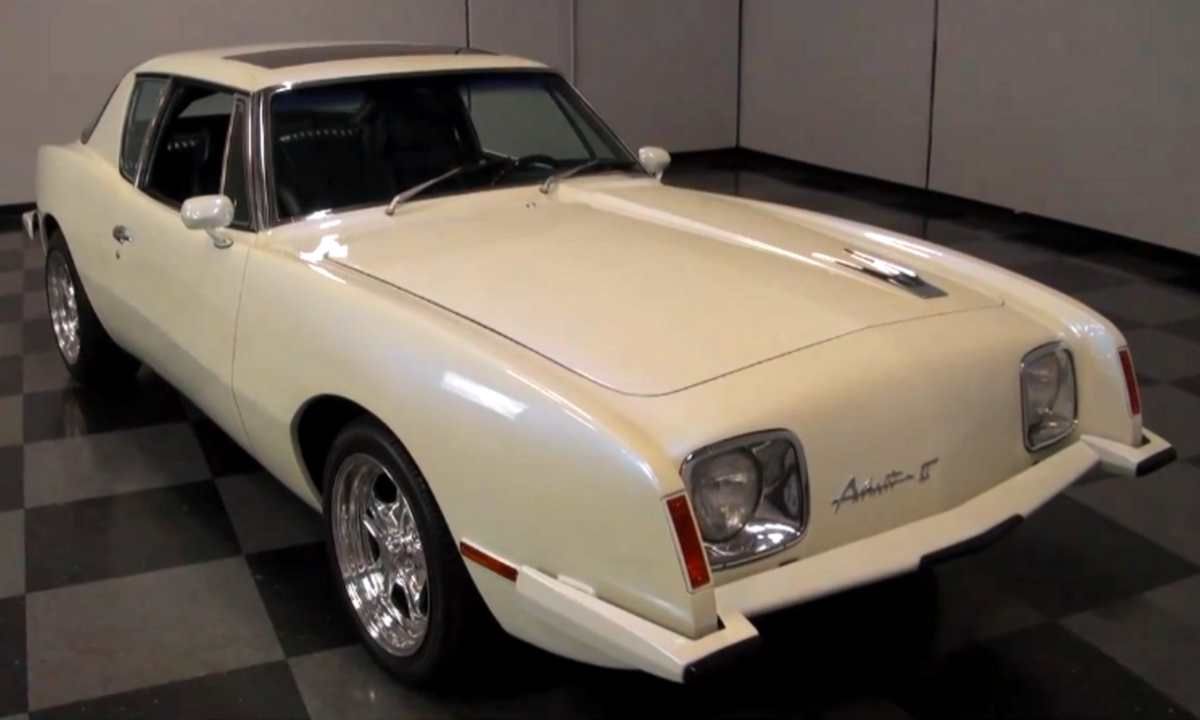
13. **290-HP Avanti**Now, if you were intrigued by the Studebaker Avanti R2 earlier, then prepare to be even more impressed, because this particular Avanti takes things to another level. While similar in its elegant DNA, the 290-HP Avanti carved out its own legend, particularly by setting blistering speed records at the legendary Bonneville Salt Flats. This wasn’t just a stylish cruiser; it was a bona fide speed demon.
The sheer fact that it was conquering land speed records speaks volumes about its hidden capabilities and the engineering prowess beneath that sleek, refined exterior. It was, as you can imagine, a highly in-demand car, with enthusiasts clamoring to get their hands on a piece of that record-breaking performance.
However, much like its R2 sibling, its production was once again capped due to frustrating issues, making it a frustratingly rare collector’s item today. It’s a crying shame that such an incredibly capable and sought-after machine, one that genuinely pushed the boundaries of performance for its era, remains somewhat of an insider’s secret. But for those in the know, the 290-HP Avanti is a true gem.
Car Model Information: 1963 Studebaker Avanti R1
Name: Studebaker Avanti
Caption: 1963 Studebaker Avanti
Manufacturer: Studebaker
Aka: Avanti
Production: 1962: 1,200;
Assembly: Studebaker Corporation#Studebaker Factories,South Bend, Indiana
Predecessor: Studebaker Gran Turismo Hawk
Class: Personal luxury car
BodyStyle: coupe
Layout: FR layout
Engine: 289 CID
Abbr: on
Transmission: Manual transmission
Wheelbase: 109 in
Length: 192.4 in
Width: 70.3 in
Height: 53.8 in
Weight: 3095 lb
Related: Studebaker Lark
Designer: Raymond Loewy#Avanti
Categories: All articles with incomplete citations, Articles with incomplete citations from September 2018, Articles with short description, CS1 errors: missing title, Cars discontinued in 1963
Summary: The Studebaker Avanti is a personal luxury coupe manufactured and marketed by Studebaker Corporation between June 1962 and December 1963. A halo car for the maker, it was marketed as “America’s only four-passenger high-performance personal car.”
Described as “one of the more significant milestones of the postwar industry”, the Raymond Loewy-designed car offered safety features and high-speed performance. Called “the fastest production car in the world” upon its introduction, a modified Avanti reached over 170 mph (270 km/h) with its supercharged 289-cubic-inch (4,740 cm3) R3 engine at the Bonneville Salt Flats. In all, it broke 29 world speed records at the Bonneville Salt Flats.
Following Studebaker’s discontinuation of the model, a succession of five ventures manufactured and marketed derivatives of the Avanti model through 2006. These ventures licensed intellectual property and, in some cases procured parts, through arrangements with the successors to the Studebaker assets.
Get more information about: Studebaker Avanti
Buying a high-performing used car >>>
Brand: Studebaker Model: Avanti
Price: $17,500 Mileage: 0 mi.
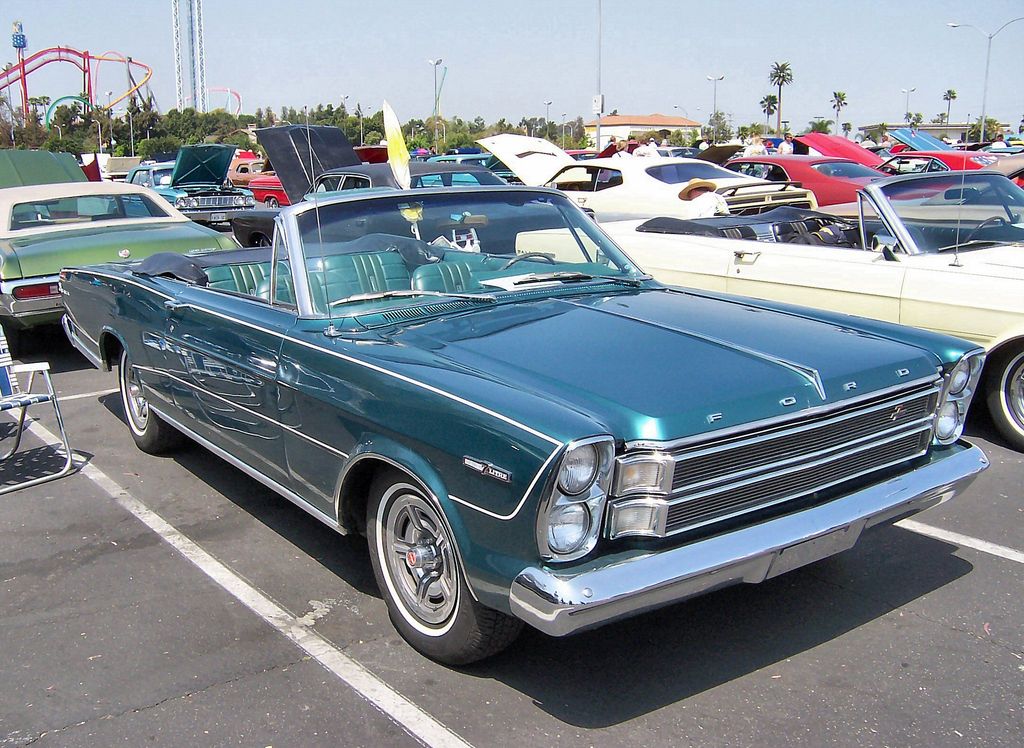
14. **Ford Galaxie 500 7-Litre**Ford these days might be better known for churning out trucks that dominate the landscape, but cast your minds back to a time when they unleashed a proper, surprising muscle car onto the unsuspecting public. The Ford Galaxie 500 7-Litre was one such beast, a big car that arrived with a certain look that perfectly lent itself to the space craze dominating the era.
Opinions among enthusiasts, it must be said, vary wildly on its aesthetic, but one thing is undeniable: it certainly had that sporty style. And beneath that divisive exterior lay the heart of a true muscle car, powered by a Blue Oval’s monstrous 345-horsepower, 428 cubic-inch V8. This wasn’t just a big sedan; it was a full-size bruiser that could truly get up and go.
While it offered formidable power and a commanding presence, the Galaxie 500 7-Litre often takes a backseat in discussions of Ford muscle, especially when compared to the ubiquitous Mustang. It’s a genuine shame, because this land yacht packed serious heat and offered a unique blend of comfort and raw power. It’s the kind of car that leaves you wondering why it isn’t celebrated more, a true overlooked giant from the golden age of muscle.
Car Model Information: 2024 Genesis GV70 2.5T AWD
Name: Ford Galaxie
Caption: 1963 Ford Galaxie 500 4-Door Sedan
Manufacturer: Ford Motor Company
Production: 1958–1974 (United States),1964–1968 (Australia),1967–1983 (Brazil)
ModelYears: 1959–1974
Assembly: Homebush West,Australia,São Paulo,Brazil
Class: Full-size
Layout: FR layout
Predecessor: Ford Fairlane (Americas)
Successor: Ford LTD (Americas)
Categories: 1960s cars, 1970s cars, All articles with unsourced statements, Articles with short description, Articles with unsourced statements from February 2010
Summary: The Ford Galaxie is a car that was marketed by Ford in North America from the 1959 to 1974 model years. Deriving its nameplate from a marketing tie-in with the excitement surrounding the Space Race, the Galaxie was offered as a sedan within the full-size Ford range throughout its production run. In the full-size segment, the model line competed against the Chevrolet Impala and Plymouth Fury.
The model line was assembled by Ford in multiple sites across the United States; four generations of the model line were produced. The Galaxie was also produced locally by Ford Australia and Ford Brasil, adopting commonality from the third-generation 1965 design.
Get more information about: Ford Galaxie
Buying a high-performing used car >>>
Brand: Ford Model: Galaxie 500
Price: $39,995 Mileage: 20,074 mi.
So there you have it, folks! Fourteen incredible machines that, for one reason or another, simply never got the widespread reverence they deserved. From the aerodynamic oddballs to the luxury bruisers, these cars prove that genuine muscle doesn’t always wear a famous badge or come with a multi-million-dollar price tag. There’s a whole universe of undervalued, underappreciated, and undeniably awesome cars out there just waiting for someone like you to rediscover them. So go on, dive in, and find your own piece of overlooked automotive history. You might just find your next obsession.



